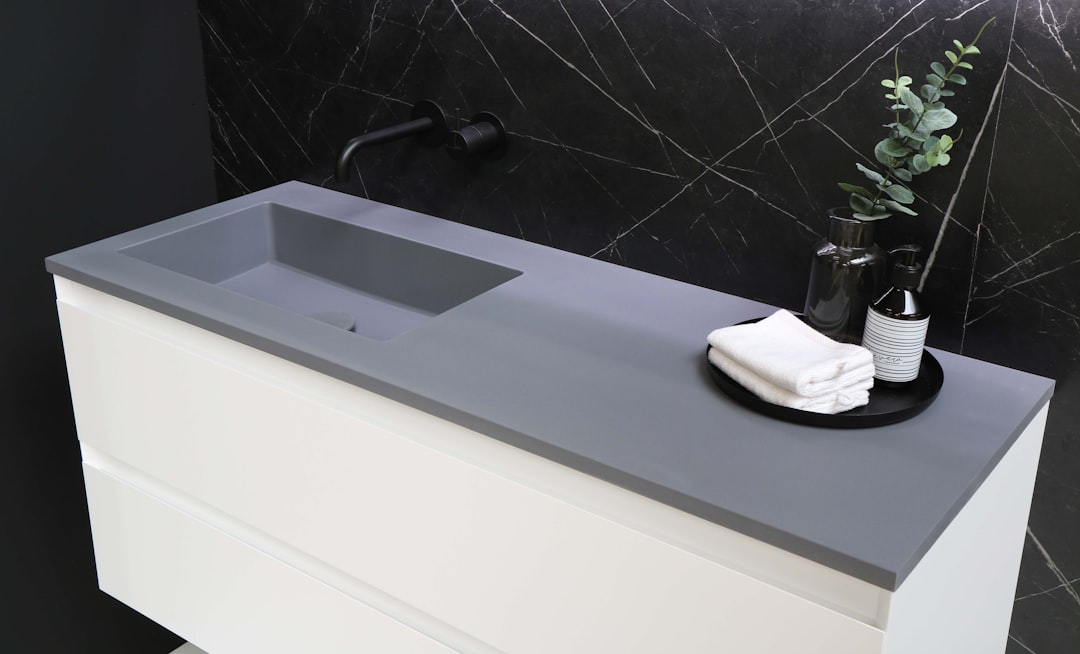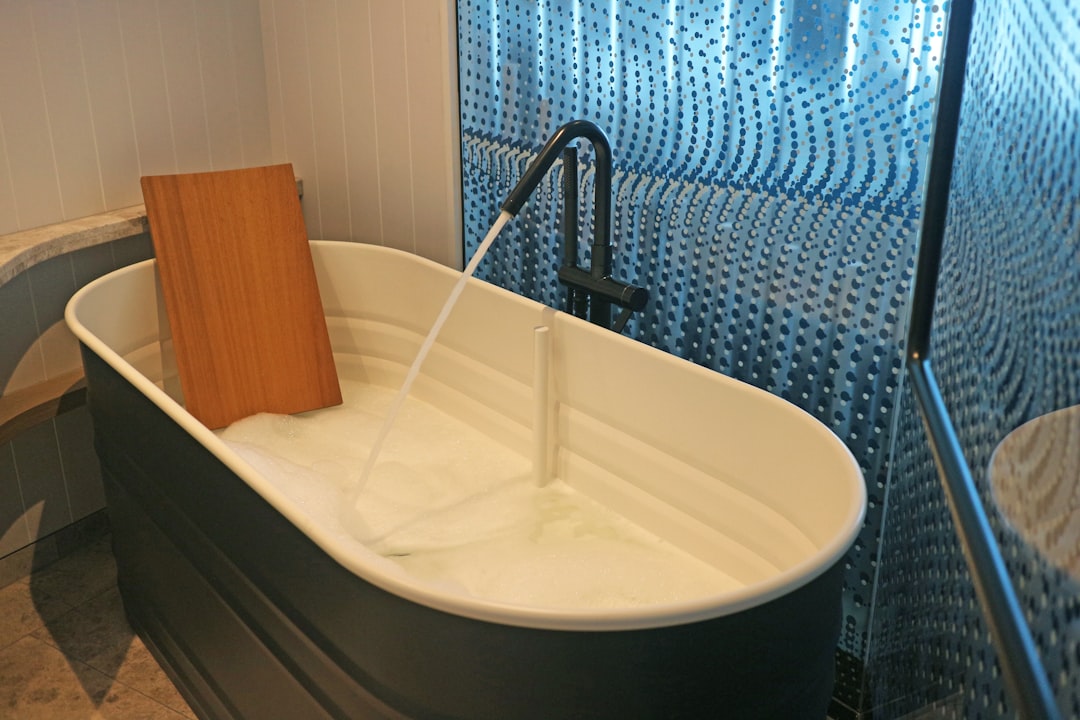Beyond the Rectangle: A Homeowner's Guide to Custom Shaped Sinks
- Share
- Issue Time
- Sep 19,2025
Summary
Ready to move beyond standard sink designs? This guide explores the world of custom shaped sinks, helping you make your kitchen or bathroom truly one-of-a-kind. We cover everything from innovative materials and unique shapes to the design process and cost, giving you the expert insights needed to create a functional work of art.

Beyond the Rectangle: A Homeowner's Guide to Custom Shaped Sinks
For decades, the choice in sinks was simple: round, square, or rectangular. But modern design and fabrication have opened up a world of possibilities. A custom shaped sink is more than just a place to wash your hands or dishes; it's a statement piece, a focal point that can define the entire aesthetic of a room. Whether you're aiming for an ultra-modern, organic, or truly avant-garde look, a custom sink can be the element that ties it all together.

What Exactly is a Custom Shaped Sink?
Unlike off-the-shelf models, a custom shaped sink is designed and built to your specific requirements. This goes beyond just choosing a material or color. We're talking about dictating the exact form: a sink that curves with your countertop, an asymmetrical basin that creates visual interest, or an extra-long trough sink with multiple faucets for a busy family bathroom. The only limits are your imagination, your budget, and the properties of the materials you choose.
Why Choose a Custom Shape Over a Standard Sink?
While a standard farmhouse or undermount sink can be beautiful, a custom shape offers distinct advantages. The primary driver is achieving a completely unique aesthetic. It allows you to create a functional work of art that is personal to your home. Beyond looks, custom sinks offer practical solutions, such as fitting into an awkward corner, maximizing a small space, or creating an ergonomic workstation tailored perfectly to your height and reach.
Key Benefits:
- Unmatched Personalization: Create a design that is 100% unique to your space.
- Problem-Solving Design: Perfect for unconventional layouts and specific functional needs.
- Artistic Focal Point: A custom sink can serve as the centerpiece of your kitchen or bathroom design.
- Seamless Integration: Can be designed to flow seamlessly with your countertops for a monolithic look.
Popular Materials for Custom Sink Designs
Material choice is critical as it dictates durability, maintenance, and the shapes that are possible. While traditional materials like fireclay are common for farmhouse styles, custom designs often leverage more versatile options.
| Material | Pros | Cons | Best For |
|---|---|---|---|
| Concrete | Highly customizable shapes and colors, develops a unique patina. | Porous (requires sealing), heavy, can be prone to staining. | Industrial, modern, and organic designs. |
| Natural Stone | Luxurious look, can match countertops, extremely durable. | Heavy, expensive, requires sealing, can be chipped. | High-end kitchens, seamless countertop-to-sink integration. |
| Solid Surface | Can be molded into virtually any shape, seamless, non-porous. | Can be scratched (though easily repairable), moderate heat resistance. | Complex curves, minimalist aesthetics, and integrated designs. |
| Copper | Naturally antimicrobial, develops a unique 'living finish'. | Can be dented, finish changes over time (patina), requires specific care. | Rustic, eclectic, and statement-making designs. |
| Stainless Steel | Durable, affordable, versatile for different forming techniques. | Can be noisy, shows water spots, can be scratched. | Industrial kitchens, complex geometric shapes, budget-conscious customs. |
Exploring a World of Shapes: From Curves to Asymmetry
The beauty of custom design is the freedom of form. Forget the standard single or double-bowl. Consider:
- Trough Sinks: Long, linear basins perfect for shared bathrooms or large kitchen islands.
- Curved Basins: Sinks that follow the curve of a bow-front vanity or a winding countertop.
- Asymmetrical Shapes: Create dynamic visual flow and designate different functional zones within a single basin.
- Integrated Drainboards: A drainboard that is molded as part of the sink itself, ensuring water flows back into the basin.
- Ramp Sinks: A sloped basin bottom that offers a sleek, minimalist look and efficient drainage.

The Design and Fabrication Process: What to Expect
Creating a custom sink is a collaborative process between you, your designer, and a skilled fabricator.
- Concept & Design: Start with sketches, inspiration photos, and precise dimensions of your space.
- Material Selection: Choose a material based on your aesthetic, lifestyle, and budget.
- Template & Mold Creation: For materials like concrete or solid surface, a precise mold is built. For stone, a template guides the cutting process.
- Fabrication: The sink is cut, molded, or formed, and then polished and finished.
- Installation: Due to their weight and unique shapes, custom sinks almost always require professional installation to ensure they are properly supported by the cabinetry.
Integrating a Custom Sink into Your Countertop
Proper integration is key to a polished look. An undermount style creates a clean edge, allowing you to wipe crumbs directly into the sink. Alternatively, an integrated sink, where the countertop and basin are made from the same continuous piece of material (commonly solid surface or concrete), offers the most seamless and modern appearance.
Cost Considerations for Custom Shaped Sinks
There's no sugarcoating it: custom comes at a premium. While a standard stainless-steel sink might cost a few hundred dollars, a custom sink can easily range from $2,000 to $10,000 or more, depending on the material, size, and complexity of the design. Factors influencing cost include the raw material price, the labor involved in creating the mold and fabricating the shape, and the complexity of the installation.
Care and Maintenance for Your Unique Sink
Maintenance directly relates to the material you choose. A stainless steel custom sink can be cleaned with soap and water, while a concrete or natural stone sink will require periodic resealing to prevent staining and damage. Always follow the fabricator's specific care instructions. Using gentle, non-abrasive cleaners will preserve the finish of any custom sink for years to come.
Case Study: A Custom Trough Sink in a Modern Farmhouse
Imagine a 48-inch long trough sink made of charcoal-colored concrete in a kitchen island. It features two low-profile faucets, providing separate workstations for two people. The design combines the rustic, substantial feel of a farmhouse sink with the clean lines and unique material of modern design, acting as the undisputed centerpiece of the kitchen.
The Future is Fluid: Trends in Sink Design
We are seeing a move towards more organic and fluid shapes. Designers are experimenting with integrated features like built-in colanders, multi-level basins, and embedded lighting. Materials are also evolving, with new composites offering greater durability and even more design flexibility.
Is a Custom Shaped Sink Right for You?
Choosing a custom sink is a significant decision. If you value a truly personalized space, have a specific design challenge to solve, and your budget allows, it is an investment that can elevate your home from standard to stunning. It's a commitment to a look, as these sinks are built into the cabinetry and countertop, making them a permanent feature of your home. However, for those who seek the ultimate blend of function and personal expression, there is no substitute.